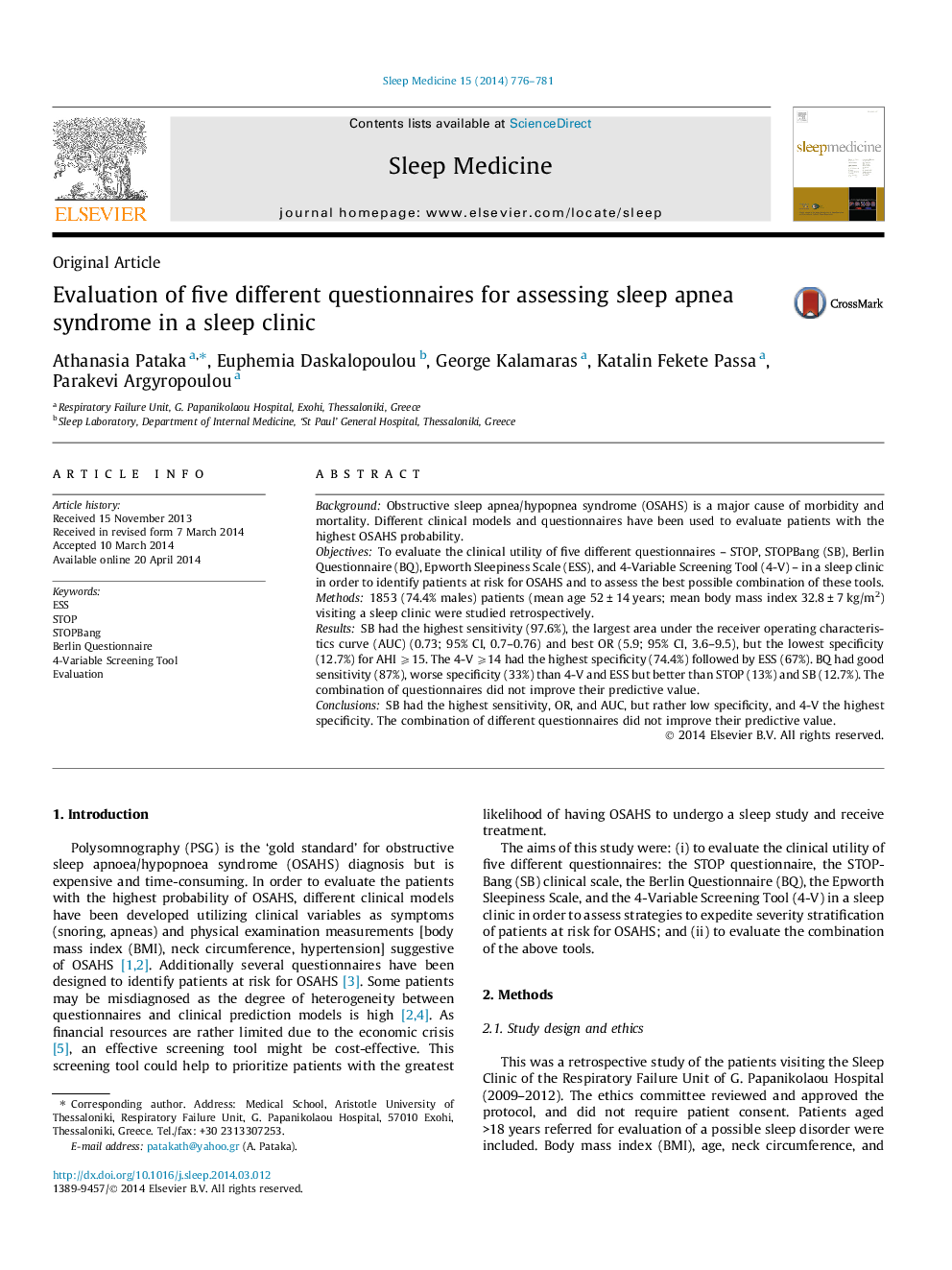| Article ID | Journal | Published Year | Pages | File Type |
|---|---|---|---|---|
| 3175889 | Sleep Medicine | 2014 | 6 Pages |
BackgroundObstructive sleep apnea/hypopnea syndrome (OSAHS) is a major cause of morbidity and mortality. Different clinical models and questionnaires have been used to evaluate patients with the highest OSAHS probability.ObjectivesTo evaluate the clinical utility of five different questionnaires – STOP, STOPBang (SB), Berlin Questionnaire (BQ), Epworth Sleepiness Scale (ESS), and 4-Variable Screening Tool (4-V) – in a sleep clinic in order to identify patients at risk for OSAHS and to assess the best possible combination of these tools.Methods1853 (74.4% males) patients (mean age 52 ± 14 years; mean body mass index 32.8 ± 7 kg/m2) visiting a sleep clinic were studied retrospectively.ResultsSB had the highest sensitivity (97.6%), the largest area under the receiver operating characteristics curve (AUC) (0.73; 95% CI, 0.7–0.76) and best OR (5.9; 95% CI, 3.6–9.5), but the lowest specificity (12.7%) for AHI ⩾15. The 4-V ⩾14 had the highest specificity (74.4%) followed by ESS (67%). BQ had good sensitivity (87%), worse specificity (33%) than 4-V and ESS but better than STOP (13%) and SB (12.7%). The combination of questionnaires did not improve their predictive value.ConclusionsSB had the highest sensitivity, OR, and AUC, but rather low specificity, and 4-V the highest specificity. The combination of different questionnaires did not improve their predictive value.
